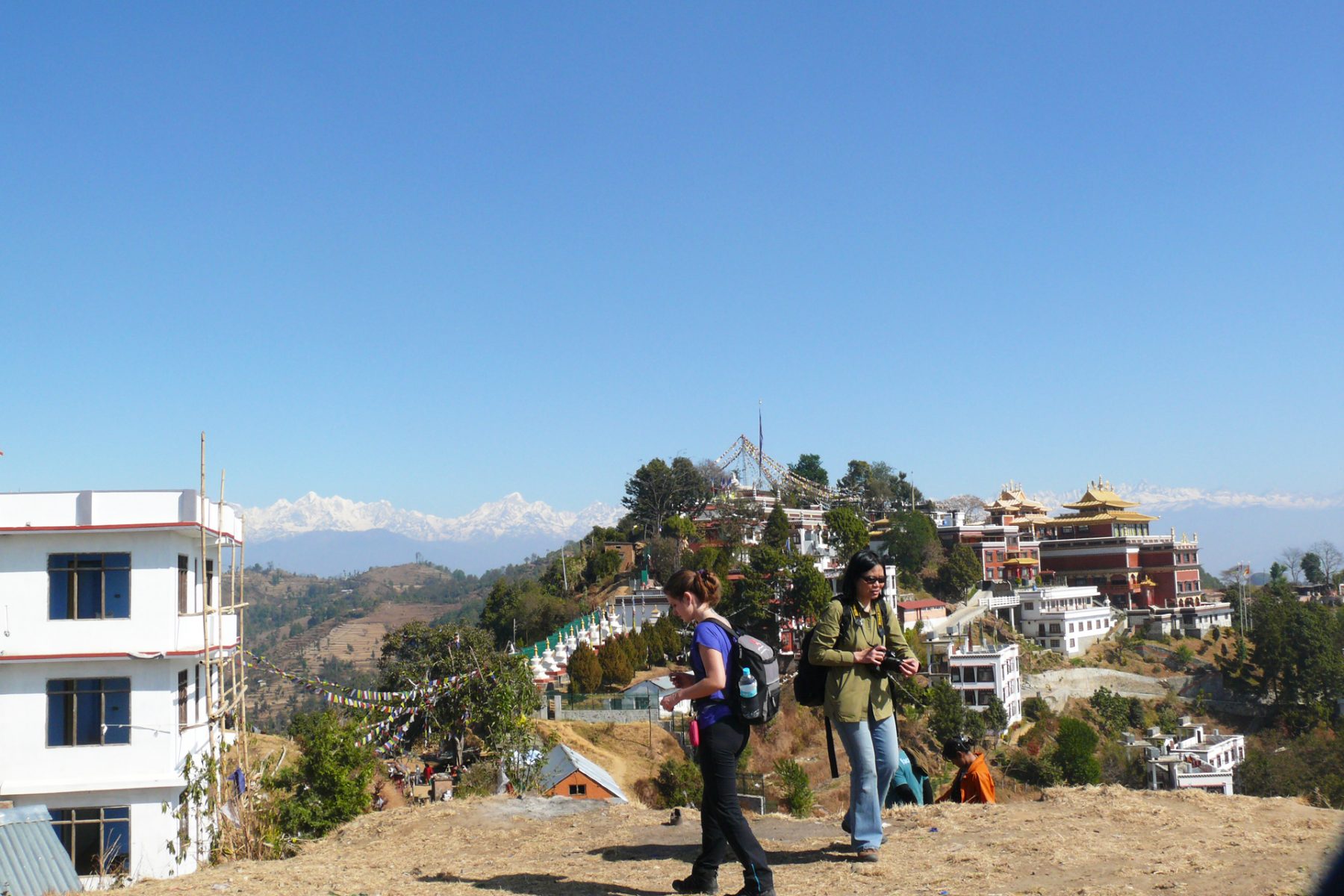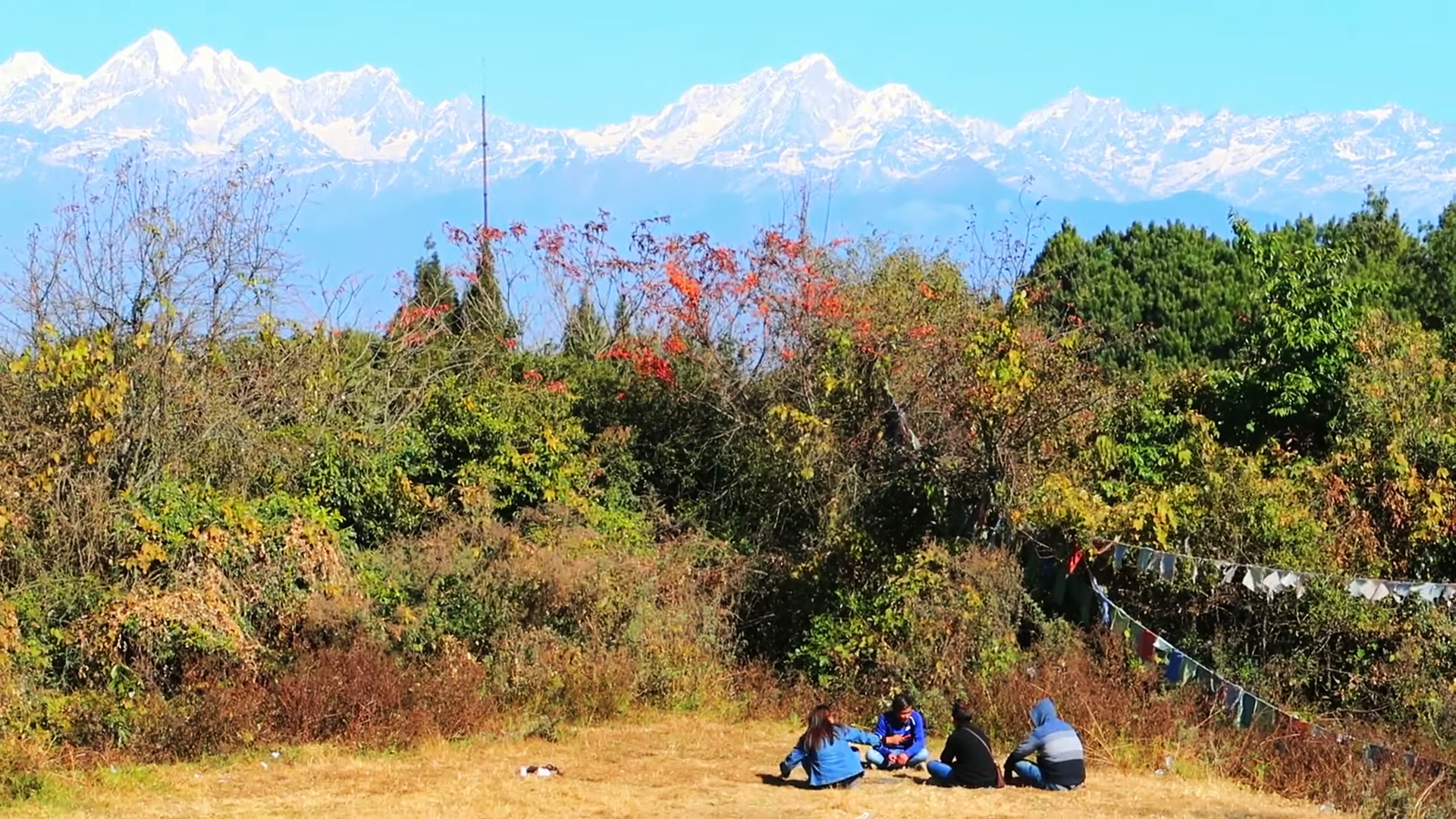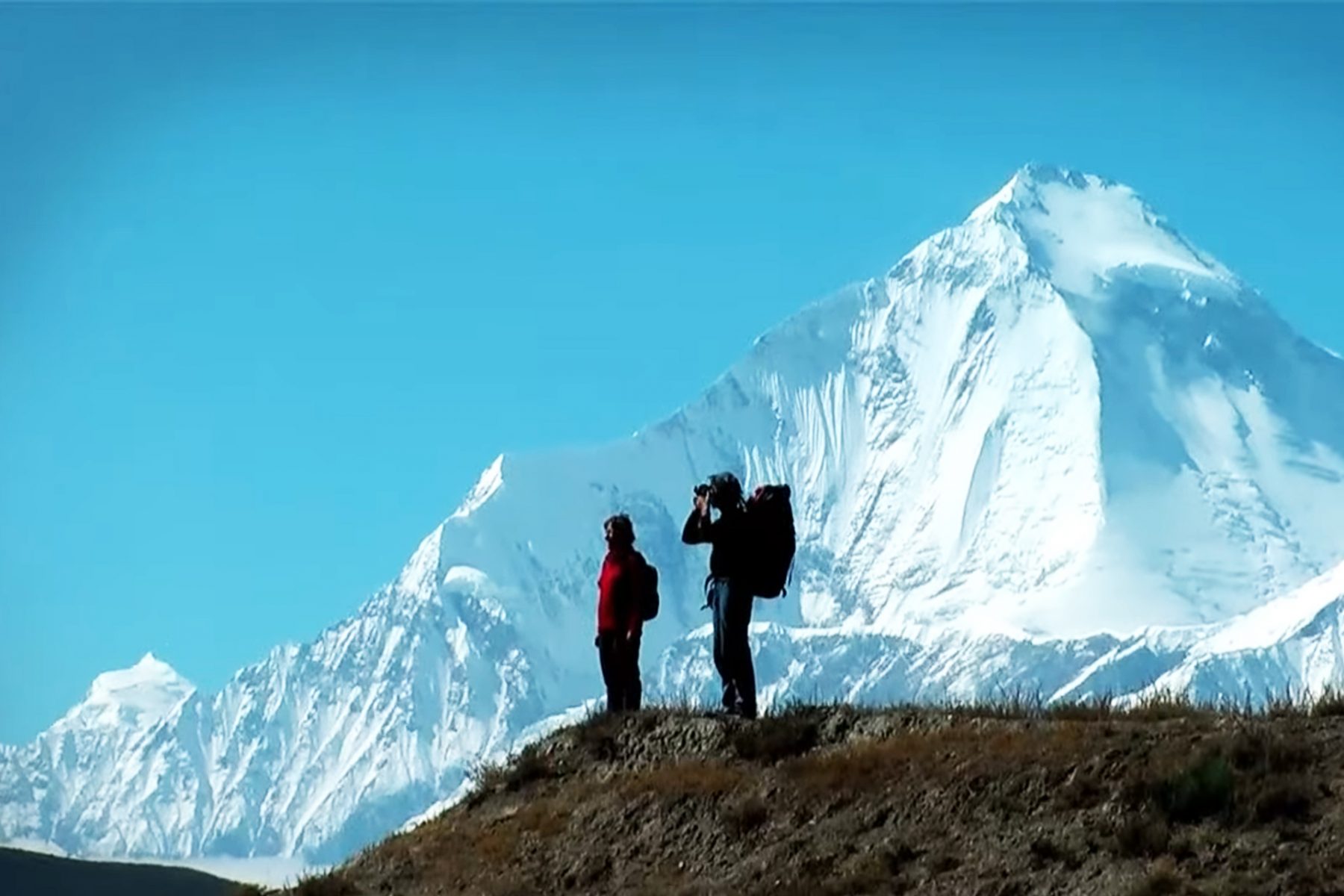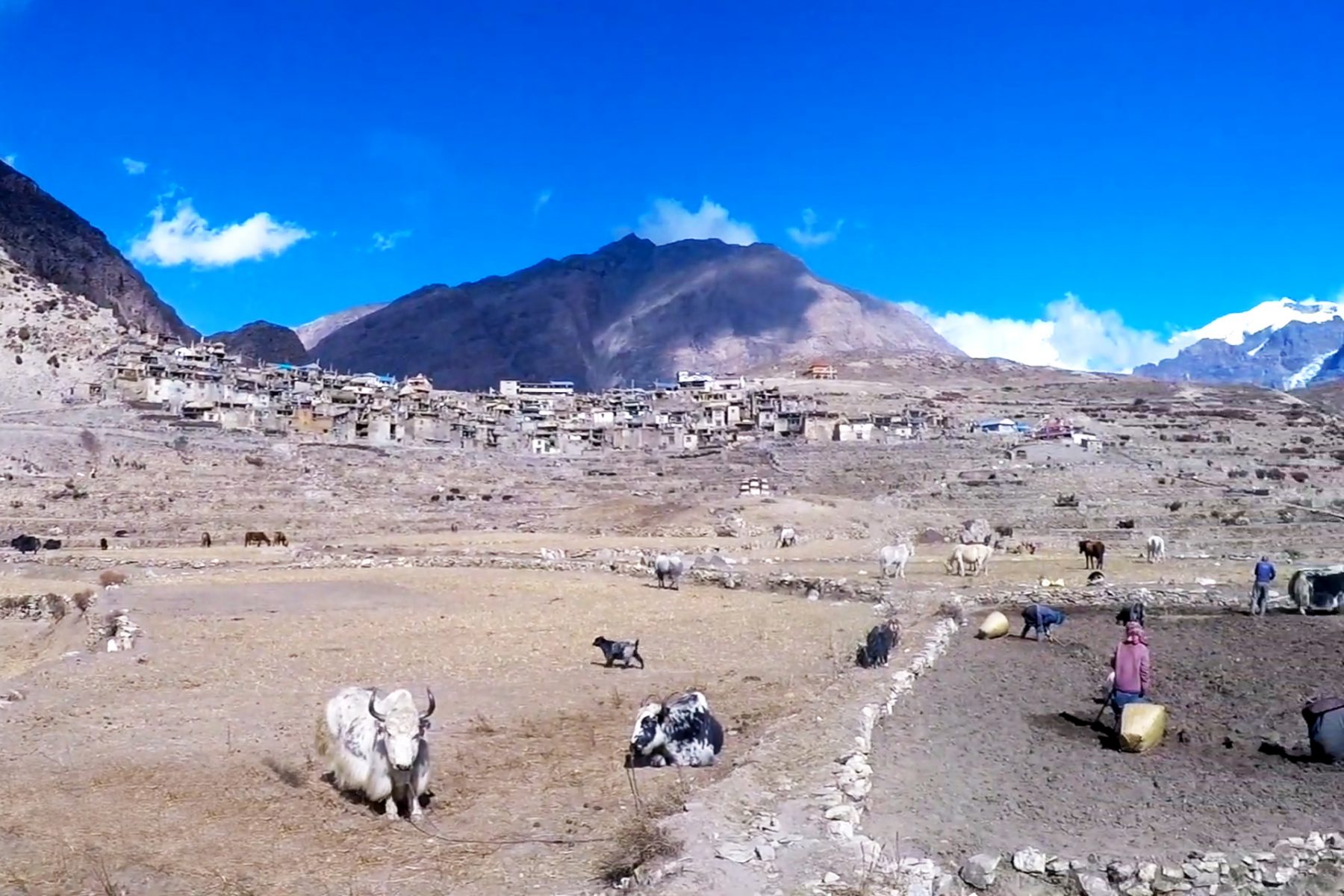Introduction to the Kanchenjunga Trek
“In the heart of the Himalayas, the Kanchenjunga trek reveals a story of beautiful nature and majestic peaks.”
Nepal is a paradise for trekkers looking for adventure and tranquility in nature. Among the numerous trekking routes in Nepal, the Kanchenjunga trek stands out as an untouched and mysterious journey that beckons the intrepid traveler. This 22-day trek takes you to the base camp of the magnificent mountain Kanchenjunga.
Kanchenjunga Trek is a wilderness and unspoiled trekking trail that was opened to foreigners for trekking only in 1988. Kanchenjunga Mountain is in the eastern part of Nepal. Mount Kanchenjunga is the third-highest mountain in the world, with a height of 8,586 meters.
This trekking trip in the Kanchenjunga Conservation Area is more exciting and challenging. This is a wonderful trekking experience in the Himalayan region of Nepal. The trek starts at 920 meters and reaches 5,143 meters above sea level.
The hike includes challenging high passes such as Mirgin La Pass and Selle La Pass. The panoramic views during the pass are nothing short of awe-inspiring, making the challenges worthwhile. From the base camp, you have a unique view of the surrounding peaks, including Jannu, Yalung Kang, and the Kanchenjunga massif.
The Kanchenjunga trek should be the dream of every traveler. But the remoteness of the place attracts only those travelers who prefer to stay away from the crowds. It is also suitable for those who want to enjoy solitude, are willing to walk on the beaten trail, and are ready to explore the unspoiled natural beauty.
Explore the Tibetan Buddhist culture.
This long trekking trail takes you to the border of Nepal, India, and Tibet and allows you to explore the beauty of the mountains. The region is mainly inhabited by people of the Rai and Limbu ethnic groups. These ethnic groups have their own unique culture, traditions, and ways of life. Tibetan Buddhist culture is mostly practiced by the people here. So you will find monasteries, stupas, and gompas on your way. Visits to monasteries and holy places during the Kanchenjunga base camp trek add a spiritual dimension.
During the trek, you will cross lush valleys, dense rhododendron forests, vibrant villages, and various floras and faunas. The area is home to many birds and animals, and if you are lucky, you will encounter animals like snow leopards, red pandas, and Himalayan black bears.
Attractions of the Kanchenjunga Trek
- Explore Kanchenjunga, the third-highest mountain in the world, with a height of 8586 meters.
- Walk through the Kanchenjunga Conservation Area, which is rich in flora and fauna.
- Experience lush green forests, mesmerizing waterfalls, rivers, and beautiful villages on a less-crowded trail.
- Cross passes, thrilling suspension bridges, and grasslands reach the base camp of the Kanchenjunga Mountains.
- Experience the lifestyle of the locals with a blend of traditional Nepali and Tibetan culture.
- Visit ancient monasteries along the trail.
- Interact with locals in Gurung, Limbu, Rai, and Sherpa villages.
- There is an opportunity to see endangered species such as snow leopard, red panda, musk deer, and various species of birds and butterflies.
- You can enjoy amazing panoramic views of high peaks and glaciers while crossing high passes like Sele La Pass and Mirgin La Pass.
What can you expect from the Kanchenjunga Trek?
Stunning Scenery: You will have panoramic views of the Kanchenjunga massif, the world’s third-highest mountain, and the surrounding peaks.
Various Scenarios: The Kanchenjunga Base Camp Trek takes you to different landscapes and remote areas. Experience different landscapes, from the dense forests of the lowlands to the high mountain terrain.
Rich Biodiversity: Explore the Kanchenjunga Conservation Area. This conservation area is home to diverse flora and fauna. It covers a range of ecosystems, from subtropical forests to alpine meadows.
Cultural Immersion: Along the trekking route are the traditional villages of the Limbu, Rai, and Sherpa communities. Experience their unique culture, traditions, and hospitality.
Remote and off-the-beaten path: The Kanchenjunga trek route is less crowded than other popular treks in Nepal. It provides a more peaceful and pristine trekking experience.
Challenging terrain: The Kanchenjunga Base Camp trek combines ascent and descent. It involves traversing steep mountain passes and navigating rugged terrain. Being on a physically demanding trek requires good fitness and stamina.
High Altitude Experience: The trek leads to an altitude of over 5,000 meters (16,404 ft). Experience high-altitude trekking at Kanchenjunga Base Camp. Proper acclimatization is essential to reduce the risk of altitude-related problems.
Tea House and Camping: Stay at teahouses at lower elevations, offering basic accommodation and food. Camping at high altitudes may be necessary, which adds a sense of adventure to the trek.
Unique scenario: Discover unique landscapes such as the Yalung Glacier and Pangpema. It adds a sense of exploration and adventure to your trip.
Visit Spiritual and Holy Places: Along the trail, visit monasteries and holy sites. This adds a spiritual and cultural dimension to your trek.
Is the Kanchenjunga trek suitable for you?
The Kanchenjunga Trek is a challenging and remote trek. It takes you around Kanchenjunga, the third-highest mountain in the world. Whether the Kanchenjunga trek is suitable for you depends on various factors. Before starting a trek, you should consider physical fitness, trekking experience, health condition, personal preferences, etc. Here are some considerations:
Physical Fitness: Kanchenjunga trekking is a challenging and demanding adventure. It involves long and strenuous days of walking over varied terrain, steep ascents, and descents. Physical fitness is essential to covering long distances and varying terrains. Ensure you have a good fitness level and are comfortable with high-altitude trekking. Before trekking, you can do regular cardiovascular exercise and strength training.
Altitude: This trek takes you to altitudes above 5000 meters, with a high risk of altitude sickness. It is essential to be aware of the risks associated with high altitudes and take necessary precautions. Proper acclimatization is also vital to avoid altitude sickness. We recommend taking rest days and ascending slowly to acclimate well. It is good to consult a healthcare professional before attempting this trek.
Trekking Experience: Some sections of Kanchenjunga trekking can be challenging. Previous trekking experience is not essential but is beneficial, especially at higher altitudes. Many people complete the trek without prior experience. However, being physically fit enhances the overall trekking experience. If you are a beginner, consider starting with shorter and less strenuous treks before trekking.
Duration: The Kanchenjunga is a long-day trek that takes about three weeks to complete. However, the duration also depends on your pace and rest days, so make sure you have enough time to complete the trek.
Terrain and Climate: The trek includes rocky paths, forest paths, and high mountain terrain. At high altitudes, the weather can change unpredictably. So, be prepared for rugged, high-altitude trails and different weather conditions.
Basic amenities: Accommodations at the Kanchenjunga base camp are usually tea houses or lodges. The tea house on the trail is like a small lodge with basic facilities. Foods are also more basic and limited, especially at high altitudes. This trek may suit you if you are comfortable with basic food and accommodations.
Personal Interests: When choosing a trek, it is essential to be clear about your interests and expectations. On the trek, you can enjoy stunning snow-capped mountain views, diverse landscapes, and cultural experiences. So, make sure that this trek matches your interests and expectations.
Benefits of booking a Kanchenjunga trek with Odyssey
- Free private vehicle service for pick-up and drop-off at the airport
- As souvenirs, an Odyssey Trek duffel bag and t-shirt
- Map of the Kanchenjunga Trek
- Use an oxygen meter at a high altitude to measure the oxygen saturation of the blood.
- Arrangement of emergency medical kit
- Accessible extra luggage storage facility for the duration of the trek
- Arrangement a down jacket and sleeping bag for trekking if you don’t have your own
Food and accommodations during the Kanchenjunga Trek
As Kanchenjunga is a challenging and remote trek, you should prepare well, considering food and accommodation. Food facilities during the trek may vary, and the options are generally more basic than in famous trekking areas. Along the trekking route, many villages have teahouses. These teahouses are like small lodges that provide basic accommodation and food.
Teahouses usually have a basic menu with various local and international dishes. The menu usually includes Dal Bhat (rice, lentil soup, and vegetables), noodles, soups, and sometimes Western food options. The menu in tea houses can be limited, especially in higher altitudes and remote areas.
You can also find a variety of hot drinks, such as tea, coffee, and hot lemonade, which can be comforting in cold weather. It is a good idea to carry some snacks and energy bars for extra energy during the trek.
Drinking water is available everywhere, but always make sure that the water you consume is safe. Purifying water using water purification tablets or a water filtration system is advisable. You can also buy bottled water if it is available.
Rooms in teahouses are basic, with simple beds and shared facilities. You can expect simple rooms in teahouses with beds, pillows, mattresses, and blankets. Extra blankets are available if it gets too cold. But it’s a good idea to bring a sleeping bag, as temperatures can drop significantly at higher altitudes.
Difficulty of Kanchenjunga Trek
The Kanchenjunga base camp trek is one of the most challenging treks in Nepal. Therefore, preparing for the challenges that may arise before attempting trekking is essential. Below are some factors that make this trek difficult:
Remote and Less Developed Areas: It is remote and less developed than popular trekking destinations such as the Annapurna and Everest regions. Food and lodging facilities in teahouses are very basic, and infrastructure is limited.
High Altitude: The trek leads to an altitude of over 5,000 meters. Altitude-related challenges, such as acute mountain sickness (AMS), are a concern in high-altitude trekking. The body needs to adjust to the change in altitude. So, ascending gradually with proper acclimatization is important to avoid altitude sickness.
Long Duration: It is a long trek that takes about three weeks to complete. The long duration and challenging terrain demand good physical fitness and endurance.
Variable Weather Conditions: The weather in the Kanchenjunga region can be unpredictable. During the trek, you may encounter rain, snow, and cold temperatures, especially at higher altitudes.
Trail Difficulty: The trek covers a variety of terrains, from lush subtropical forests to alpine meadows and high mountain landscapes. The trails are steep, rocky, and rugged, making the trek challenging.
Isolation: Compared to other popular routes, this area is less crowded and has limited access to services. This solitary trek contributes to the sense of adventure but also requires careful planning.
Due to the difficulty level, preparation is essential before attempting the trek. Previous trekking experience and good physical fitness are beneficial for completing the trek. It is advisable to go trekking with local and experienced guides for safety and navigation.
best time for Kanchenjunga Trek
The best seasons for Kanchenjunga trekking are spring (March to May) and autumn (September to November). The weather is usually stable during these seasons, and clear skies and moderate temperatures make trekking ideal.
In spring, the landscape is adorned with colorful rhododendron flowers. The trails are relatively dry, which makes the journey more comfortable. Autumn has less rainfall and a low chance of snowfall at higher altitudes, which can make trekking safer. Spectacular views of the surrounding landscapes are more likely due to low cloud cover. However, it is important to note that the weather in the Himalayas can be unpredictable. Therefore, checking the latest weather forecasts before planning a trip is always a good idea.
Trekking during the monsoon season (June to August) can be challenging due to heavy rains, muddy trails, and leeches. Similarly, the winter season (December to February) is extremely cold. Snow can fall during this season, especially at higher elevations, posing additional risks. So, the monsoon and winter seasons are generally not recommended for the Kanchenjunga trek.
High altitude sickness and acclimatization
Altitude sickness, also known as acute mountain sickness (AMS), affects hikers and climbers at high altitudes. The Kanchenjunga trek offers breathtaking scenery and challenging terrain that attract many adventurers. However, high-altitude treks can cause altitude sickness.
Altitude sickness occurs when the body cannot adjust to the reduced oxygen levels at high altitudes. At higher altitudes, the air pressure decreases, which reduces the amount of oxygen. Lack of oxygen can cause various symptoms, from mild discomfort to serious illness. Symptoms of altitude sickness include headaches, nausea, fatigue, dizziness, and shortness of breath. These symptoms usually occur at altitudes above 2,500 meters (8,200 feet). So, it is important to be aware of altitude sickness while trekking.
Altitude sickness is a serious concern, but the risk can be minimized with proper preparation, acclimatization, and awareness. To minimize the risk of altitude sickness, it is necessary to acclimatize the body and ascend gradually.
Rest days at certain altitudes should be included in your itinerary to allow the body to adjust to reduced oxygen levels. Staying hydrated also helps reduce symptoms and aid in adaptation. If the condition is severe, a low-altitude evacuation or medical assistance may also be necessary. Taking proper precautions allows you to safely enjoy the unique beauty of the Himalayas on the Kanchenjunga trek.
Kanchenjunga Trek Cost
The cost of the Kanchenjunga Base Camp Trek depends on various factors. It may vary depending on the duration of the trek, route, and services included (e.g., guide, porter, accommodation, food, and permits). Similarly, the cost of trekking also depends on the size of the group. According to your budget, you can choose a teahouse trek package or a luxury package with a camping trek.
The teahouse package includes basic teahouse service on trekking routes. A teahouse is a small guesthouse that provides travelers with basic accommodations and food. Depending on various factors, this package can range from $2,200 to $3,000 per person.
If you want better service than the basic teahouse package, you can opt for the luxury camping trek option. This luxury package offers complete luxury service. It includes high-quality accommodation in comfortable tents or lodges, professional chefs, hot showers, portable toilets, etc. Depending on various factors, you can expect to pay $3,500 to $6,500 or more per person for a luxury camping trip.
However, prices may fluctuate depending on the luxury you prefer and any additional services you require. Researching various trekking companies and finding the best option that fits your budget and preferences is advisable. Let us know your requirements, interests, and group size, and we will prepare an excellent package price per your requirements.
Water, toilet, shower, mobile charger, internet and wi-fi
Facilities like water, toilets, showers, mobile chargers, and internet on the trekking route may vary depending on the location and type of accommodation. Access to clean water is essential during the trek. Along the trekking trail, you come across teahouses or lodges where you can buy bottled water. You can also refill your water bottles with filtered or boiled water at these teahouses for a small fee. Treating the water using purification tablets or filters for clean water is a good idea.
Along the Kanchenjunga Base Camp trekking route, teahouses or lodges usually have basic toilet facilities. Depending on the location, these can range from squat toilets to more Western-style toilets. In some remote areas, you may also encounter simple pit latrines at high altitudes. It is advisable to carry toilet paper, small towels, soap, hand sanitizer, etc.
Teahouses have shower facilities, but their availability and standards may vary. In some places, you have to pay extra for a hot shower, while in others, only a cold water shower may be available. The availability of shower facilities in mountains at higher altitudes may be limited.
Many teahouses along the trail have charging facilities for electronic devices such as mobile phones and cameras. However, the availability of this facility may vary depending on location and teahouse infrastructure. They usually provide charging outlets in common areas or guest rooms.
Electricity in the Kanchenjunga region is generally generated from solar energy sources. Some teahouses provide electricity 24 hours a day, while others offer limited hours, usually in the evening. At some teahouses, charging may be free, while others may charge a small fee for each device. Carrying a portable power bank as a backup is a good idea.
Internet and wi-fi access are generally limited in Kanchenjunga trekking. Some teahouses offer wi-fi for a fee, but the connection can be slow and unreliable. As you climb higher, the availability of wi-fi and internet facilities decreases. Most teahouses in remote and high-altitude areas do not have any wi-fi or internet facilities. You can use satellite phones for alternative communication, but remember that it is expensive.
Permits for Kanchenjunga Base Camp Trek
A permit is mandatory for trekking in the Kanchenjunga region. The main permits you need for the Kanchenjunga trek are:
Restricted Area Permit (RAP):
Due to its sensitive nature, the Kanchenjunga area has been declared restricted. Trekking in this area requires a special permit, which can be obtained only through a registered trekking agency in Nepal. Since independent trekking is not allowed in this area, you must arrange a permit through a trekking agency.
This permit costs US$20 per person per week for the first four weeks. After the first four weeks, you pay US$25 per person per week. A minimum of 2 people are required for a special permit, as solo trekking is also prohibited in this area. Note that the cost of the special permit is the same for foreigners and SAARC nationals.
Kanchenjunga Conservation Area Project Permit (KCAP):
Another permit required for trekking is the Kanchenjunga Conservation Area Project Permit (KCAP). You can get this KCAP permit in Kathmandu or at the entry point to the conservation area. The KCAP fee is NPR 500 (approximately USD 4) per person for SAARC countries. The KCAP fee for nationals other than SAARC nationals is NPR 2000 per person (approximately USD 16).
Health and fitness training for Kanchenjunga trek
Kanchenjunga is a challenging trek that requires good health, physical fitness, and mental preparation. The trail leads through rugged terrain, high altitude, and varying weather conditions. It is better to do health and fitness training before going on the Kanchenjunga trek. Here are some health and fitness tips to help you prepare for the Kanchenjunga trek.
Cardiovascular Fitness:
Cardiovascular endurance is important for walking long distances at high altitudes through uneven terrain. To improve cardiovascular fitness, do aerobic exercise such as walking, running, cycling, or swimming. Gradually increase the intensity and duration of the workout to build endurance and stamina.
Strength Training:
Strength training strengthens the leg muscles, core, and upper body. It can help with vertical ascents and descents and comfortably carry bags. Include exercises such as squats, lunges, calf raises, push-ups, planks, and shoulder presses in your daily exercise routine.
Flexibility and Mobility:
Flexibility and mobility are essential to prevent injuries and maintain agility while trekking. Include stretching exercises and yoga into your workouts to improve flexibility and range of motion.
Trekking Practice:
Practice trekking on uphill and uneven terrain 1 month in advance. Gradually increase the duration and difficulty of your trekking to build endurance.
Height simulation:
If possible, engage in altitude simulation training by hiking at high altitudes. This helps your body adapt to the reduced oxygen levels and prepares you for the trek’s altitude challenges.
Hydration and Nutrition:
Staying hydrated is essential, so drink plenty of water throughout the day and during your workouts. Consume high-energy snacks and meals during training sessions. A balanced diet of carbohydrates, proteins, healthy fats, vitamins, and minerals will fuel your body for the trek.
Mental Preparation:
Remote and challenging trekking can be mentally demanding. Practice meditation or visualization techniques to stay focused and positive on the trek. Be prepared for unexpected weather changes, physical exertion, and possible obstacles during trekking.
Medical check-up:
Consult a doctor before starting the trek to ensure you are physically fit for high-altitude trekking. They may recommend particular medications or precautions for altitude sickness and other illnesses. It is also a good idea to carry essential medicine or first aid with you
Equipment packing list
Packing the right equipment and gear is important for a successful and comfortable Kanchenjunga trek. Depending on the season, the things you need may be slightly different. However, here is a comprehensive packing list to consider for the Kanchenjunga trek:
Clothing:
- Synthetic or merino wool tops and bottoms to wick sweat away from the skin.
- A fleece jacket or insulated vest for warmth in colder conditions.
- Insulated pants or down pants for extreme cold.
- Waterproof and breathable jacket with hood.
- Waterproof and breathable pants or rain pants.
- Lightweight, quick-drying trekking pants with zip-off legs for versatility.
- Thermal leggings or long underwear for layering in colder weather.
- Lightweight, long-sleeved trekking shirts for sun protection.
- A wide-brimmed hat or cap for sun protection.
- A beanie or warm hat for cold weather.
- Neck gaiter or scarf for wind protection.
- Lightweight gloves for mild conditions.
- Insulated waterproof gloves or mittens for cold and wet weather.
- Moisture-wicking liner socks.
- Thick, woolen trekking socks for warmth and cushioning.
- Spare pairs of socks for changing during the trek.
Footwear:
- Sturdy, waterproof trekking boots with ankle support.
- Break them in before the trek to prevent blisters and discomfort.
- Lightweight sandals or camp shoes are ideal for resting at tea houses.
Backpacking Essentials:
- Down or synthetic sleeping bags are rated for sub-zero temperatures.
- Inflatable or foam sleeping pad for insulation and comfort.
- Large, comfortable backpack with padded shoulder straps and a hip belt.
- Use a rain cover or waterproof liner to protect gear from rain.
- Adjustable trekking poles for stability and reducing strain on the knees.
- Lightweight, durable headlamp or flashlight with extra batteries.
- Insulated water bottles or hydration bladders help you stay hydrated.
- Detailed trekking map or GPS device for navigation.
- Sunglasses with UV protection.
- Sunscreen with high SPF.
- Lip balm with SPF.
- Basic first aid kit with bandages, antiseptic wipes, pain relievers, and any personal medications.
- Toilet paper, biodegradable soap, hand sanitizer, and personal hygiene items.
- Multi-tool, sewing kit, duct tape, and repair supplies for gear.
- Lightweight emergency bivy sack or space blanket.
Miscellaneous:
- A waterproof pouch to keep trekking permits, passports, and other identifications safe.
- Sufficient cash in Nepali rupees for trekking expenses.
- Credit and debit cards are available for emergencies (ATMs are unavailable in many villages).
- Camera or smartphone for capturing memorable moments.
- Extra batteries or a portable charger.
- Guidebook or map of the Kanchenjunga trek route.
- Notebook and pen for journaling or taking notes.
- High-energy snacks like nuts, energy bars, chocolates, and dried fruits.
- Ziplock bags or garbage bags for packing out waste.
- Water purification tablets, or filters, are used to treat water from natural sources.
Personal Items:
- Passport, visa, and trekking permit.
- A copy of the travel insurance policy with emergency contact information.
- Any prescription medications, along with a copy of the prescriptions.
- Toothbrush, toothpaste, biodegradable soap, and other personal hygiene items.
- Earplugs and sleep masks for a better night’s rest in teahouses.
- Quick-drying, lightweight towel for personal hygiene.
- Moisturizer and lip balm to protect skin from dryness and chapping.
Conclusion
The Kanchenjunga trek is for those looking for the perfect blend of adventure, nature, and cultural immersion. This trek is a physical and spiritual journey for those who dare to reach the lap of the Himalayas. It is a trek of a lifetime, a journey to the roof of the world. Explore the beauty of the Kanchenjunga region with Odyssey Treks. For more information about trekking and tours, feel free to contact us at info@odysseytreksnepal.com
You may like to visit: Nepal Adventure Tour in 14 days, tour, package, cost, itinerary.

































